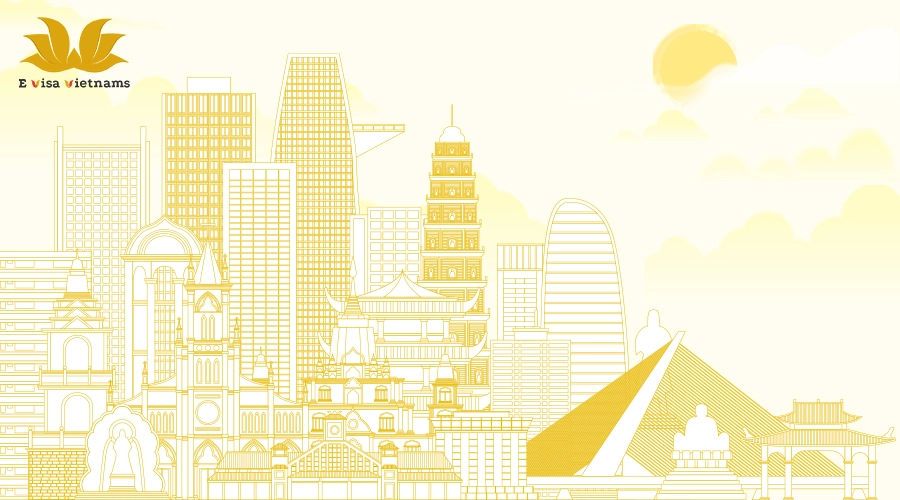vietnamese cuisine & famous dishes | apply vietnam evisa 2026
 Priyanshu Raghav
Priyanshu Raghav

Vietnam is a Southeast Asian gem known for its stunning beaches, vibrant cities, and centuries-old culture. Among its greatest treasures lies its cuisine — a blend of delicate flavors, fresh herbs, and cultural heritage. Vietnamese cuisine isn’t just food; it’s an experience that connects nature, balance, and community.
If you’re planning to explore the heart of Vietnamese food culture, this guide will take you through the must-try dishes, culinary secrets, and a complete step-by-step process to apply for your Vietnam eVisa for 2026.
Introduction to Vietnamese Cuisine
Vietnamese cuisine is globally recognized for its refreshing balance of flavors — sweet, sour, salty, bitter, and spicy. It’s a perfect harmony that mirrors the country’s yin-yang philosophy. From Hanoi’s street stalls to Ho Chi Minh City’s fine dining, every meal tells a story of local ingredients, French influence, and ancient techniques.
Unique Characteristics of Vietnamese Food
Balance of Five Fundamental Flavours
Vietnamese dishes balance five essential tastes — sweet (sugar or coconut), salty (fish sauce), sour (lime or vinegar), bitter (herbs), and spicy (chili). This equilibrium not only delights the palate but also promotes well-being.
Use of Fresh Herbs and Aromatics
Instead of relying on oil or dairy, Vietnamese cooking emphasizes freshness. Mint, basil, lemongrass, and coriander enhance the aroma and health benefits of each dish.
Cultural Influences from China and France
Centuries of cultural exchange have left a mark on Vietnamese cuisine. Chinese cooking inspired noodles and soups, while French colonization introduced baguettes, coffee, and pâté — beautifully fused in dishes like Banh Mi.
Must-Try Famous Vietnamese Dishes
Banh Cuon (Vietnamese Fresh Spring Rolls)
Delicate rice rolls filled with minced pork, mushrooms, and shallots — served with fish sauce — make this dish a light yet flavorful appetizer.
Banh Xeo (Crispy Vietnamese Pancake)
Named after the sizzling sound (“xeo”) when batter hits the pan, Banh Xeo is a turmeric-infused rice crepe filled with shrimp, pork, and bean sprouts.
Bun Cha (Hanoi’s Grilled Pork with Noodles)
A Hanoi specialty, Bun Cha combines grilled pork patties, rice noodles, and dipping sauce — famously enjoyed by Barack Obama and Anthony Bourdain in Hanoi.
Pho (Vietnam’s National Dish)
Pho is a comforting noodle soup made with bone broth, rice noodles, and meat — often eaten for breakfast across the country.
Banh Mi (Vietnamese Baguette Sandwich)
This sandwich blends French and Vietnamese elements — a crusty baguette stuffed with meats, pickled vegetables, and herbs.
Mi Quang (Quang-Style Noodles)
Originating from Central Vietnam, this turmeric-colored noodle dish is topped with shrimp, pork, and roasted peanuts.
Com Tam (Broken Rice with Grilled Pork)
A southern favorite, Com Tam is made with broken rice grains served alongside grilled pork and fried egg.
Bun Bo Hue (Hue-Style Spicy Beef Noodle Soup)
A bold, spicy noodle soup from Hue featuring beef, lemongrass, and chili oil — known for its depth of flavor.
Ca Phe Sua Da (Vietnamese Iced Coffee)
A strong dark roast coffee mixed with condensed milk and poured over ice — Vietnam’s signature beverage.
Street Food Culture in Vietnam
Vietnam’s street food scene is an open-air kitchen. From bustling night markets to roadside vendors, you can savor grilled skewers, sticky rice, and fresh fruit smoothies everywhere. Cities like Hanoi and Ho Chi Minh City are globally ranked among the best street food destinations in Asia.
Best Time and Places to Try Authentic Vietnamese Cuisine
The ideal time to enjoy Vietnamese food is during the dry season (November to April). Some culinary hotspots include:
-
Hanoi: Pho, Bun Cha, and Egg Coffee
-
Hue: Bun Bo Hue and Royal Dishes
-
Hoi An: Cao Lau noodles and White Rose Dumplings
-
Ho Chi Minh City: Banh Mi, Broken Rice, and Street Snacks
How to Apply for a Vietnam eVisa (Step-by-Step Guide for 2026)
Step 1: Visit the Official eVisa Vietnam Application Portal
Go to the official Vietnam eVisa platform to start your application.
Step 2: Choose Your Citizenship and Visa Type
Select your nationality and the visa category (tourist, business, or transit).
Step 3: Complete the Online Application Form
Fill out your personal details accurately — name, passport number, travel dates, and entry port.
Step 4: Upload Required Documents
Upload a scanned copy of your passport’s bio page and a recent passport-sized photograph.
Step 5: Pay the eVisa Processing Fee
Make the payment using a secure online method (credit/debit card).
Step 6: Receive Application ID and Track Status
After submission, note your application ID to track the status.
Step 7: Get Approval and Download Your eVisa
Once approved, download and print your eVisa. Present it upon arrival in Vietnam.
Why Choose Professional eVisa Services
Applying through professional services like E-Visa Vietnam ensures:
-
Error-free application review
-
Secure payment handling
-
Fast processing time
-
24/7 customer support
-
Real-time application tracking
This guarantees a hassle-free, secure, and quick visa approval experience.
Common Mistakes to Avoid When Applying for a Vietnam eVisa
-
Submitting blurry passport photos
-
Entering incorrect passport details
-
Forgetting to check email for confirmation
-
Using unreliable or fake websites
Avoid these pitfalls by choosing an authorized, verified visa platform.
Conclusion
Vietnamese cuisine is a sensory celebration of culture, flavor, and freshness. From Pho to Banh Mi, every dish tells a story of balance and harmony. Begin your journey to explore Vietnam’s food heritage by applying for your Vietnam eVisa today.
Start your culinary adventure now — apply for your Vietnam Visa with E-Visa Vietnam and experience authentic Vietnamese cuisine firsthand!
WRITE YOUR COMMENT
Your email address will not be published. Required fields are marked *